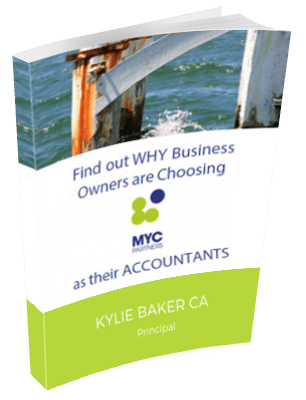
In the business world, attractive remuneration packages are essential for attracting and retaining top talent.
While cash salaries are the most common form of compensation, many employers also offer additional benefits to their employees, such as company cars, entertainment allowances, or discounted goods and services. These “fringe benefits” can be valuable to an employee’s overall salary package.
However, business owners need to realise that these fringe benefits are subject to a specific tax called the Fringe Benefits Tax (FBT).
Introduced in the 1980s, FBT is a tax imposed on employers who provide non-cash benefits to their employees in addition to their regular wages or salaries.
FBT is commonly misunderstood, and many businesses may need to be made aware of their obligations or the potential tax implications of the benefits they offer. Familiarity with FBT is crucial to avoiding significant penalties and interest charges from the Australian Taxation Office (ATO).
What are Fringe Benefits?
Benefits provided to employees outside of their salaries are fringe benefits.
These benefits can take various forms, such as using a company car, entertainment expenses (e.g., tickets to sporting events or concerts), employee discounts on goods or services, or reimbursement of personal expenses.
A key factor in determining whether a benefit is subject to FBT is the existence of an employer-employee relationship.
It’s important to note that not all business expenses are considered fringe benefits.
For example, if you take a client out for a business lunch, this would typically be treated as a tax-deductible business expense rather than a fringe benefit, as there is no employer-employee relationship involved.
One exception to FBT is the “otherwise deductible rule.”
If an employer provides an employee with a benefit that the employee would have been entitled to claim as a tax deduction if they had incurred the expense themselves, then the benefit may be exempt from FBT.
For example, if an employer pays for an employee’s professional membership fees or work-related education expenses, these would generally not be subject to FBT, as the employee could have claimed a deduction for these expenses.
Motor Vehicle Fringe Benefits
Motor vehicles are one of the most common fringe benefits provided by businesses. Determining the tax liability hinges on the vehicle’s business use percentage.
Employers must maintain a logbook for at least 12 continuous weeks, recording odometer readings and reasons for business trips. The business use percentage is then calculated by dividing the total business kilometres by the total kilometres travelled during the logbook period.
This percentage is applied to the operating costs to determine the tax-deductible and FBT-liable portions. While the logbook method is recommended for accuracy, employers can alternatively claim based on a reasonable estimate of business use, though the ATO may require evidence.
The entire operating cost may be claimed without FBT if employers ensure vehicles aren’t available for private use, such as by requiring parking at business premises after hours.
Contrary to a common misconception, vehicle types like utes are not automatically exempt from FBT under the legislation’s definitions. The ATO still assesses vehicles to determine if they are primarily used for business purposes.
Calculating the taxable value of a motor vehicle fringe benefit involves factors like vehicle cost, business use percentage, and employee contributions. For accurate calculations and reporting, it is recommended to seek professional advice.
Other Fringe Benefits

While motor vehicles are a common fringe benefit, many other types of benefits can be subject to FBT. Here are some examples:
Entertainment
Providing entertainment to employees, such as Christmas parties, concert tickets, or sporting event tickets, is generally considered a fringe benefit subject to FBT. Some exceptions exist, such as if the entertainment is provided for staff training purposes or is directly related to the employee’s role.
Employee Discounts
If an employer provides discounts on goods or services to their employees, the value of those discounts may be subject to FBT. For example, if a retail store offers a 50% discount to employees on merchandise, the discount value would be considered a fringe benefit.
Expense Payments
If an employer pays for or reimburses an employee’s personal expenses, such as school fees, rent, or utility bills, these payments are typically considered fringe benefits subject to FBT.
FBT Reporting and Compliance
Complying with FBT regulations requires businesses to follow specific reporting and filing requirements. First, it’s important to note that the FBT year runs from April 1 to March 31, which differs from the standard income tax year.
Key Points to Remember:
- FBT Returns: Employers must lodge FBT returns if they provide fringe benefits, with deadlines typically set for late May. The Australian Taxation Office (ATO) will be informed about the benefits provided, and any tax due will be calculated correctly.
- Impact on Employees: Some fringe benefits must be reported on employees’ payment summaries when their total value exceeds $2,000 within the FBT year. While not directly affecting taxable income, these reported benefits can influence entitlements and obligations, such as the Medicare levy surcharge.
- Record-Keeping is Crucial: Maintaining detailed records of fringe benefits provided, including calculations and any employee contributions, underpins effective FBT management. Additionally, this helps businesses prepare for any inquiries or audits from the ATO.
Conclusion: Fringe Benefits Tax
Fringe benefits tax is a complex and often misunderstood area of taxation for businesses in Australia. While providing fringe benefits to employees can be a valuable part of an attractive remuneration package, business owners must understand their obligations and comply with FBT regulations.
At MYC Partners, our team of experts has extensive knowledge and experience handling FBT matters for businesses of all sizes and across various industries.
We can help you:
- Understand your FBT obligations and ensure compliance
- Properly calculate and report fringe benefits
- Minimise your FBT liabilities through legitimate tax planning strategies
- Maintain accurate records and documentation
Don’t let fringe benefits tax become a compliance headache for your business. Contact us today to schedule a consultation and let our team guide you through the complexities of FBT, providing peace of mind and ensuring you stay on the right side of the law.
Disclaimer: This article provides a general overview of fringe benefits tax (FBT) and its implications for businesses and individuals. Tax laws and regulations are subject to change, and your situation may require tailored advice. For the most up-to-date information on FBT, its reporting requirements, and compliance guidelines, please visit the Australian Taxation Office’s official page on FBT. Always seek professional tax advice to ensure compliance with current laws and make informed decisions about your tax obligations.






